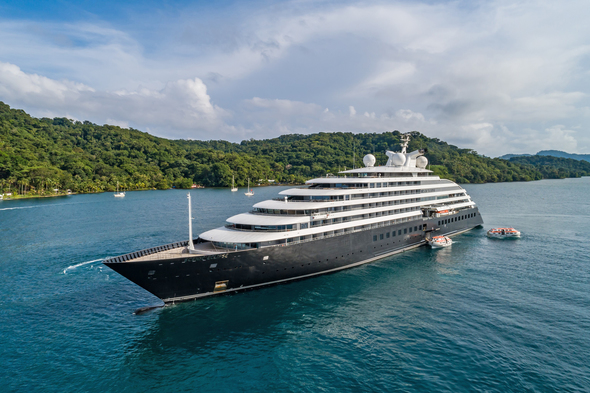The first to take travellers where only scientists and explorers had gone before, Lars-Eric began with pioneering trips to Antarctica in 1966 and the Galapagos in 1967. Sven-Olof Lindblad expanded his father's legacy by creating the marine-focused Special Expeditions division of Lindblad Travel. Having built the 104-passenger Lindblad Explorer in 1969, the company pushed boundaries and were the first to successfully navigate the Northwest Passage with a commercial passenger vessel in 1984.

In the '90s there was a period of significant growth when Hapag-Lloyd turned their extensive expertise in passenger shipping to expedition travel, launching the purpose-built MS Bremen in 1990. The following year saw the founding of polar specialist Quark Expeditions, along with Aurora Expeditions. Then Oceanwide Expeditions, and a second expedition ship for Hapag-Lloyd, MS Hanseatic, followed in 1993.
The decade saw an expansion of routes and itineraries, with Quark claiming the first-ever tourist transit of the Northeast Passage using a chartered Russian icebreaker in 1991, a feat only achieved by a non-icebreaker cruise ship as recently as 2014 when Hapag-Lloyd's MS Hanseatic made the journey.

During this time newer vessels refined journeys, and operators established the standards and expectations we know today, particularly in the polar regions. Shore landings and zodiac outings became the norm, with a select few offering more adventurous options including kayaking, snow-shoeing and the occasional scenic helicopter flight.
Growth in the sector continued steadily in the 2000s. Hurtigruten expanded from its Norwegian coastal operations, running since 1893, and by 2007 had launched its first expedition ship, MS Fram. In 2008 Silversea established Silversea Expeditions, bringing the concept of cruising way off the beaten track to small ship aficionados.

This steady expansion was then eclipsed by the developments we've witnessed in the last 10 years, with a host of new operators and ships, and the creation of a new sector: luxury expedition.
New entrants include Seabourn, with selected itineraries on board their adapted vessel Seabourn Quest and the much-anticipated new-build Seabourn Venture, and Scenic, whose new-build ship, Scenic Eclipse, offers more toys for exploration than anything seen before, including two state-of-the-art helicopters and a mini-sub, plus all the luxuries on board that you'd expect from the best classic cruise ships.

Taking a different direction, Hurtigruten have led the way in low carbon technology, launching the world's first hybrid-powered cruise ship, MS Roald Amundsen, in 2019, followed later that year by the sister ship MS Fridtjof Nansen. Ponant launched six Explorer Class vessels between 2018 and 2020, to join the four sister ships they introduced between 2010 and 2015, all of which roam the world operating both classic cruises and expedition itineraries.
New and innovative ship technology can be seen with the adoption of the X-BOW design by Aurora Expeditions' Greg Mortimer, and the soon-to-be-launched sister ship Sylvia Earle, as well as Lindblad Expeditions' newest vessel, National Geographic Endurance. Others, such as Hapag-Lloyd, have introduced new vessels with innovations like glass viewing balconies and bow walkways for wildlife viewing.

Most extraordinary is that this growth will accelerate over the next few years, with the popularity of expedition cruising expected to be intensified by the coronavirus crisis as demand increases for once-in-a-lifetime experiential journeys to the most remote parts of the world.
Silversea's new expedition vessel in the Galapagos, Silver Origin, will begin operations shortly, and more of their classic fleet will be converted to be expedition capable. Scenic have cut steel on their second Eclipse-class yacht, with plans for four more. Ponant have almost completed their revolutionary new hybrid-powered icebreaker, Le Commandant Charcot, sure to push the boundaries.

Quark will be introducing their first new-build ship, Ultramarine, designed as a platform for a wide variety of shore excursions from kayaking to heli-hiking and more. Other new entrants will include Crystal Cruises, whose vessel Crystal Endeavor will offer more space per passenger than any other cruise ship at sea, and Viking Ocean Cruises with polar and Galapagos programmes, not to mention the new iteration of Swan Hellenic with two ice-strengthened ships, and Atlas Ocean Voyages, launching in 2021, with ambitions to expand to a five ship operation over the next few years.
Such growth may seem extraordinary, but if you're worried about destinations becoming overcrowded then don't be. All this amounts to an increase in capacity of less than just a single one of Royal Caribbean's behemoth flagships!


